AMD A10-5800K & A8-5600K Review: Trinity on the Desktop, Part 1
by Anand Lal Shimpi on September 27, 2012 12:00 AM ESTAfter years of waiting, AMD finally unveiled its Llano APU platform fifteen months ago. The APU promise was a new world where CPUs and GPUs would live in harmony on a single, monolithic die. Delivering the best of two very different computing architectures would hopefully pave the way for a completely new class of applications. That future is still distant, but today we're at least at the point where you can pretty much take for granted that if you buy a modern CPU it's going to ship with a GPU attached to it.
Four months ago AMD took the wraps off of its new Trinity APU: a 32nm SoC with up to four Piledriver cores and a Cayman based GPU. Given AMD's new mobile-first focus, Trinity launched as a notebook platform. The desktop PC market is far from dead, just deprioritized. Today we have the first half of the Trinity desktop launch. Widespread APU availability won't be until next month, but AMD gave us the green light to begin sharing some details including GPU performance starting today.
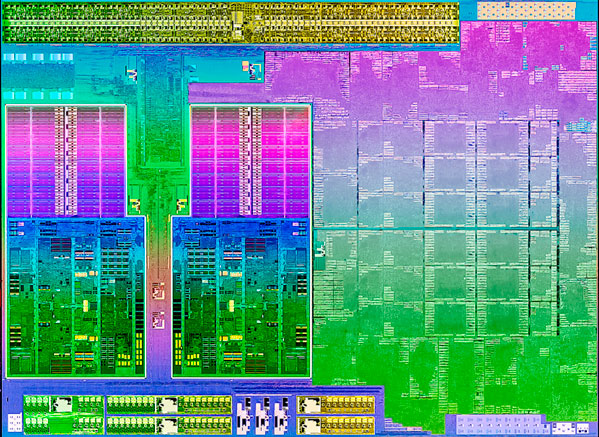
AMD's Trinity APU, 2 Piledriver modules (4 cores)
We've already gone over the Trinity APU architecture in our notebook post earlier this year. As a recap, Piledriver helped get Bulldozer's power consumption under control, while the Cayman GPU's VLIW4 architecture improved efficiency on the graphics side. Compared to Llano this is a fairly big departure with fairly different CPU and GPU architectures. Given that we're still talking about the same 32nm process node, there's not a huge amount of room for performance improvements without ballooning die area but through architecture changes and some more transistors AMD was able to deliver something distinctly faster.
| Trinity Physical Comparison | |||||
| Manufacturing Process | Die Size | Transistor Count | |||
| AMD Llano | 32nm | 228mm2 | 1.178B | ||
| AMD Trinity | 32nm | 246mm2 | 1.303B | ||
| Intel Sandy Bridge (4C) | 32nm | 216mm2 | 1.16B | ||
| Intel Ivy Bridge (4C) | 22nm | 160mm2 | 1.4B | ||
On the desktop Trinity gets the benefit of much higher TDPs and thus higher clock speeds. The full lineup, sans pricing, is below:
Remember the CPU cores we're counting here are integer cores, FP resources are shared between every two cores. Clock speeds are obviously higher compared to Llano, but Bulldozer/Piledriver did see some IPC regression compared to the earlier core design. You'll notice a decrease in GPU cores compared to Llano as well (384 vs. 400 for the top end part), but core efficiency should be much higher in Trinity.
Again AMD isn't talking pricing today, other than to say that it expects Trinity APUs to be priced similarly to Intel's Core i3 parts. Looking at Intel's price list that gives AMD a range of up to $134. We'll find out more on October 2nd, but for now the specs will have to be enough.
Socket-FM2 & A85X Chipset
The desktop Trinity APUs plug into a new socket: FM2. To reassure early adopters of Llano's Socket-FM1 that they won't get burned again, AMD is committing to one more generation beyond Trinity for the FM2 platform.
The FM2 socket itself is very similar to FM1, but keyed differently so there's no danger of embarrassingly plugging a Llano into your new FM2 motherboard.
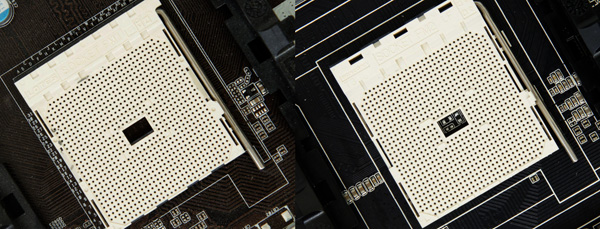
Socket-FM1 (left) vs. Socket-FM2 (Right)
AMD both borrows from Llano as well as expands when it comes to FM2 chipset support. The A55 and A75 chipsets make another appearance here on new FM2 motherboards, but they're joined by a new high-end option: the A85X chipset.
The big differentiators are the number of 6Gbps SATA and USB 3.0 ports. On the A85X you also get the ability to support two discrete AMD GPUs in CrossFire although obviously there's a fairly competent GPU on the Trinity APU die itself.
The Terms of Engagement
As I mentioned earlier, AMD is letting us go live with some Trinity data earlier than its official launch. The only stipulation? Today's preview can only focus on GPU performance. We can't talk about pricing, overclocking and aren't allowed to show any x86 CPU performance either. Obviously x86 CPU performance hasn't been a major focus of AMD's as of late, it's understandable that AMD would want to put its best foot forward for these early previews. Internally AMD is also concerned that that any advantages it may have in the GPU department are overshadowed by their x86 story. AMD's recent re-hire of Jim Keller was designed to help address the company's long-term CPU roadmap, however until then AMD is still in the difficult position of trying to sell a great GPU attached to a bunch of CPU cores that don't land at the top of the x86 performance charts.
It's a bold move by AMD, to tie a partial NDA to only representing certain results. We've seen embargoes like this in the past, allowing only a subset of tests to be used in a preview. AMD had no influence on what specifics benchmarks we chose, just that we limit the first part of our review to looking at the GPU alone. Honestly with some of the other stuff we're working on I don't mind so much as I wouldn't be able to have a full review ready for you today anyway. Our hands are tied, so what we've got here is the first part of a two part look at the desktop Trinity APU. If you want to get some idea of Trinity CPU performance feel free to check out our review of the notebook APU. You won't get a perfect idea of how Piledriver does against Ivy Bridge on the desktop, but you'll have some clue. From my perspective, Piledriver seemed more about getting power under control - Steamroller on the other hand appears to address more on the performance side.
We'll get to the rest of the story on October 2nd, but until then we're left with the not insignificant task of analyzing the performance of the graphics side of AMD's Trinity APU on the desktop.
The Motherboard
AMD sent over a Gigabyte GA-F2A85X-UP4 motherboard along with an A10-5800K and A8-5600K. The board worked flawlessly in our testing, and it also gave us access to AMD's new memory profiles. A while ago AMD partnered up with Patriot to bring AMD branded memory to market. AMD's Performance line of memory includes support for AMD's memory profiles, which lets you automatically set frequency, voltage and timings with a single BIOS setting.
We've always done these processor graphics performance comparisons using DDR3-1866, so there's no difference for this review. The only change is we only had to set a single option to configure the platform for stable 1866MHz operation.
Processor graphics performance scales really well with additional memory bandwidth, making this an obvious fit. There's nothing new about memory profiles, this is just something new for AMD's APU platform.


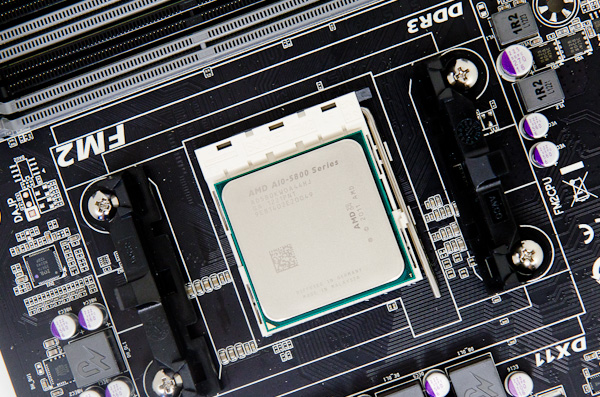
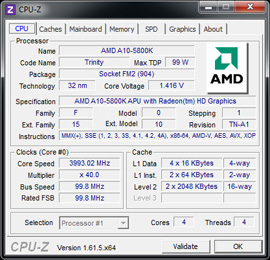
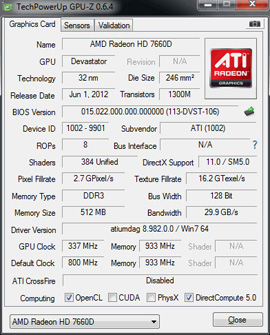
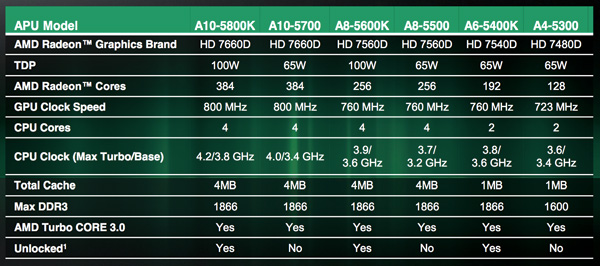

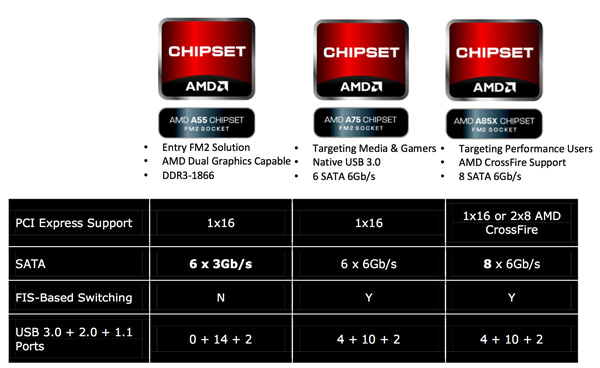






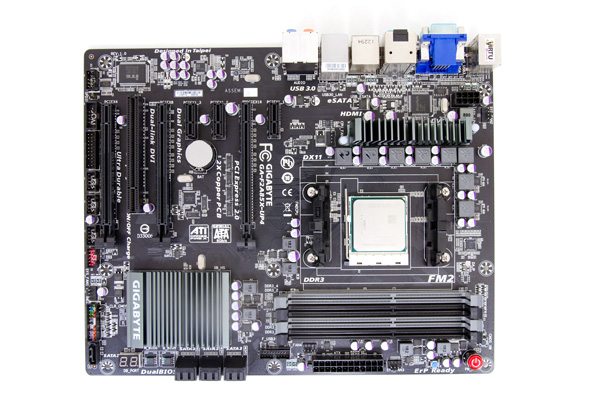

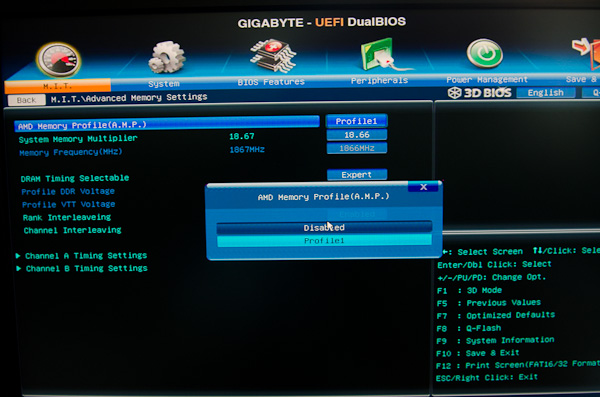








139 Comments
View All Comments
Arbie - Thursday, September 27, 2012 - link
For all the reasons you listed, Crysis Warhead is very much worth keeping in the mix. Personally, it's one of the few games I return to and easily the best of all of them. I'm very interested in how the new chips run it.
Thanks.
SanX - Thursday, September 27, 2012 - link
Make these processors capable of 2, 4, 6, 8-chip configurations and make appropriate cheap motherboards to sell the processors by shovels.They will be happy, we will be happy. Intel will be in trouble.
Indeed, 32-core PC for less then $1000 !
calzahe - Thursday, September 27, 2012 - link
The main issue with Trinity is that it is basically almost the same as Liano, just cosmetic improvements in architecture like VLIW5 -> VLIW4 in GPU and new X86 Piledriver cores... But the number of streaming processors reduced from 400 to 384 and memory controller has still only 2 channels.The problem for AMD is that they don't understand that people who could buy APU to play games don't want to stick with low graphics settings in games and prefer to add extra $ to buy external graphics card and set everything in High in games. And the people who don't play games buy Intel Ivy Bridge because it consumes less energy and is less noisy.
To make next gen Kaveri APU attractive AMD should make it with minimum 800 streaming processors and memory controller should have 4 memory channels with DDR4 support. Otherwise Intel's Haswell will destroy AMD completely next year...
As for Laptops Market the Ivy Bridge has similar performance as Trinity but provides much longer battery life. So the solution for AMD again to make APU with 800 or more streaming processors and 4 channel memory controller - it will not give 10 hours battery life but anyway combined with effective idle cores switching-off will be more effecient in power saving than CPU + descrete graphics card. So many people will buy these laptops for gaming and HD Movies.
Regarding the Tablets/Smartphones market, AMD should accept the fact that the GloFo/TSMC 32nm/28nm manufacturing processes are inferior to Intel's 22nm. So unless GloFo will be on par with Intel in 14nm in 2014 (what is highly unlikely) AMD has no chances against Intel. That's why instead of wasting a lot of money and resources on Brazos they should licence ARM architecture and combine it with Radeon cores what can be quite competitive or even better than Tegra or Snapdragon.
If AMD doesn't make improvements quickly than in 1-2 years they will be sold out or bankrupt.
silverblue - Thursday, September 27, 2012 - link
Do you realise that once AMD implements its HSA initiative (along with perhaps on-die memory), it won't actually need a 4-channel memory bus? Faster clocked RAM is a must, though.In any case, people who buy APUs aren't in fact after bleeding edge performance but something affordable that doesn't perform like a dog. Add an external GPU if you like but that's really Vishera's area (and the dual module CPUs have no GPUs and as such will overclock better - Trinity's CPU cores could be more of a hindrance here).
calzahe - Thursday, September 27, 2012 - link
HSA will not help much if used with 2 channel memory, on-die memory or 3D memory stacking will happen best case at 14nm due to transistor budget restriction. But AMD woud be able to use faster clocked DDR4 with 4 channel memory controller even next year without much effort.Those who buy discrete graphics cards usually buy them together with Intel CPUs and Vishera will not change this, and also lots of people prefer Nvidia cards over AMD. So to make some competition AMD should combine middle or even high end GPUs with 4-8 x86 cores into APU and use faster clocked DDR4 with 4 channel memory controller and sell the APUs for 200-400usd - it'll be more energy efficient and cheaper than paying 200-300usd for Intel CPU plus 250-500usd for good graphics card and what's the most important is that AMD has all the technologies and resources to make this happen even next year just a correct management decision is required...
wenbo - Thursday, October 4, 2012 - link
You make it sound so easy. If it is that easy, people would have done that already.wwwcd - Thursday, September 27, 2012 - link
I agreed for that AMD's all desktop platforms need of 4 channel memory controller, but I thing than this option must release immediately...Fact is DDR4 for desktop have not will before Y2015. Four channel with high frequency it's enough for for the present.wwwcd - Thursday, September 27, 2012 - link
I agreed for that AMD's all desktop platforms need of 4 channel memory controller, but I thing than this option must release immediately...Fact is DDR4 for desktop have not will before Y2015. Four channel with high frequency it's enough for the present....Edit some errors;) ...With DDR3
silverblue - Friday, September 28, 2012 - link
It's also not cheap to implement. One of the reasons the top-end Intel boards are so expensive, I expect. I think it'd be better to go for higher speed first and foremost.The extra bandwidth could let the CPU breathe a little better as well as open up GPU performance at higher detail levels, however I'm not sure it'll be the massive boost people are hoping for. Keeping a 384-shader GPU means you'll get potentially HD 4830/4770 performance, with the added bonus of more RAM than either of those two cards, however Trinity isn't THAT bandwidth constrained - adding more shaders would certainly alter that picture.
kyuu - Friday, September 28, 2012 - link
"The problem for AMD is that they don't understand that people who could buy APU to play games don't want to stick with low graphics settings in games and prefer to add extra $ to buy external graphics card and set everything in High in games."This sentence makes no sense. If someone is looking at buying an APU, then they aren't looking at a discrete GPU setup and obviously aren't looking to run games at max settings. And, contrary to what a lot of people seem to think, a lot of people don't care about running the latest-and-greatest at max settings.
Obviously, for an enthusiast gamer, Trinity doesn't make a whole lot of sense on the desktop (unless possibly they get asymmetrical crossfire working really well). But in the mobile arena, Trinity makes a lot of sense, giving respectable gaming prowess for significantly cheaper than an Intel CPU and discrete GPU combination as well as superior gaming battery life.
What I'm most looking forward to is a tablet of Surface quality with a low-voltage Trinity powering it.
No doubt more memory bandwidth would be greatly beneficial to AMD's APUs, but it's not as simple as just going to 4 channel memory. That increases the cost of the motherboard as well as paying for four sticks of memory, and it may not be practical in the mobile arena (which is where Trinity most shines, asides from HTPC duty).